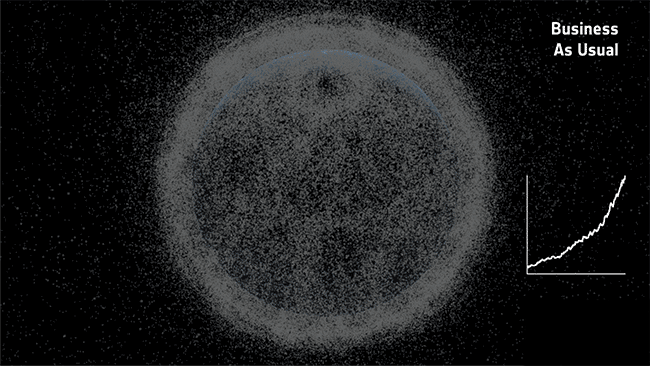
6th July 2023 Space junk monitoring satellite begins operations UK company ODIN Space has demonstrated a space junk sensor, which could map and analyse debris with sub-centimetre precision.
SpaceX recently launched a Falcon 9 rocket delivering the Transporter 8 mission, a rideshare carrying various microsatellites and nanosatellites into orbit for commercial and government customers. These payloads included new sensor technology by ODIN Space, installed on a D-Orbit ION satellite. ODIN Space has now confirmed that the spacecraft has successfully begun to capture data from its surroundings. The quantity of debris accumulating around the Earth has grown exponentially in recent decades. By 2030, experts forecast that it will cost the space sector billions of dollars per year. Pieces bigger than 10cm are already tracked and can be avoided, but over 99% of debris is so small that it is invisible to existing tracking technology and can be extremely destructive. Even a 1mm-sized fragment carries the energy of a bullet, making sub-centimetre (sub-cm) debris the single greatest threat to space-based infrastructure. In a worst-case scenario, the density of objects in low Earth orbit (LEO) due to space pollution may become so high that collisions between objects could trigger a cascade in which each collision generates more debris, increasing the chance of further collisions. This chain reaction, known as Kessler syndrome, appeared in the opening scene of the 2013 movie Gravity. Such a disaster could destroy much of the world's communication infrastructure and make it difficult or impossible to conduct safe launches into orbit. Currently, no technology exists to address the growing threat of sub-cm debris. ODIN Space was founded to fill that critical gap in the space sector.
Over the last year, the company has accelerated its technology readiness level by enhancing its sensor and electronics development, conducting space qualification testing and third-party-satellite integration testing. The next step on the company's journey, as for any company developing space-based technology, has been to test the hardware in orbit and prove that something developed and tested in the laboratory can work in space. Following the launch and deployment, ODIN Space, alongside D-Orbit, has confirmed that the first data has been recorded. The data captured by this prototype marks an important milestone and brings the company a step closer to producing a fully commercial version, capable of mapping debris as small as 0.1mm, measuring its size and location. It will also record information that has never been captured before: the precise speed and trajectory of debris. This will enable ODIN Space to build dynamic models of how even the smallest objects are behaving and provide anyone operating in space with critical situational awareness insights. With up to 100,000 satellites and hundreds of billions of dollars worth of space-based infrastructure expected to be in orbit by 2030, understanding these risks will be crucial for satellite operators, on-orbit service providers, and insurance companies. A detailed knowledge of space pollution could enable them to make better business decisions, ensure assets can operate safely for longer, minimise costs, and generate more revenue. "It was great to watch the launch of our demo sensor onboard the SpaceX Transporter-8 mission last week. We're excited to announce that our sensor has successfully powered up and is transmitting data," said James New, CEO and Co-founder of ODIN Space. "It's an amazing achievement for our team and an important milestone for ODIN Space. I'd like to thank the UK Space Agency, ESA BIC, Innovate UK, and our investors for their support in helping us get this far. We'll now focus on providing our customers with the next generation of space data and sending many more sensors to every orbit. By understanding how lethal, sub-centimetre debris behaves, we can protect space assets, maximise growth and drive sustainability in space."
Comments »
If you enjoyed this article, please consider sharing it:
|







